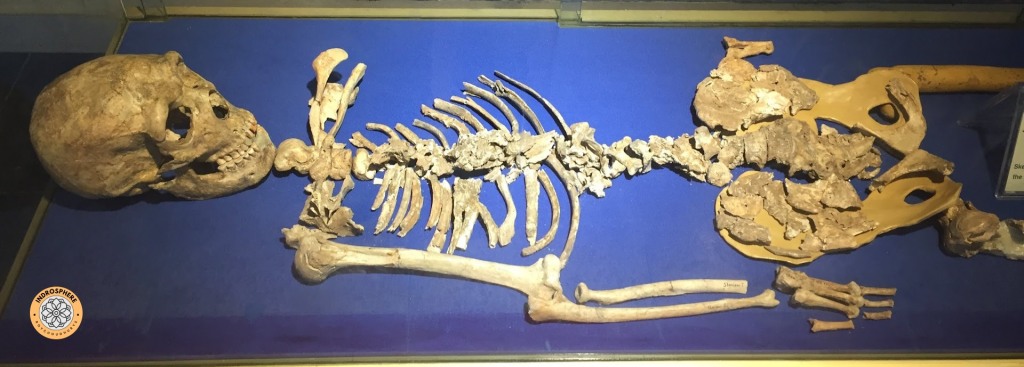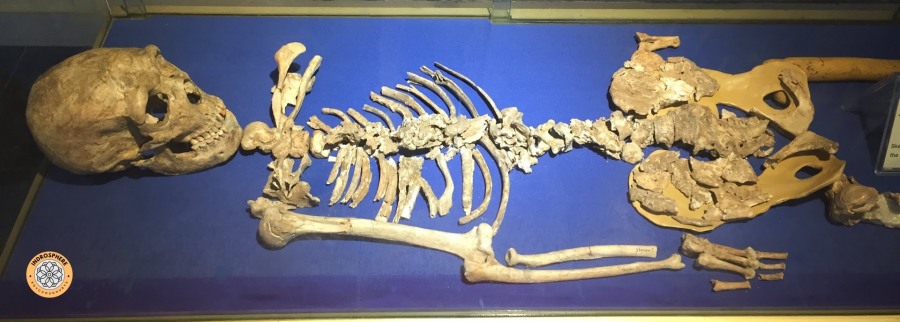Today, on International Museum Day, I’m reminiscing about my visit to the Iraq Museum in Baghdad. A few years ago, I had the opportunity to explore this remarkable institution, home to countless artefacts and treasures that showcase the rich history of this ancient land. Among the exhibits, one left an indelible mark on me: the remains of Shanidar 1, affectionately known as “Nandy.” This Neanderthal, discovered in the Paleolithic cave of Shanidar in Iraqi Kurdistan, dates back to 60,000-45,000 BCE, offering a profound glimpse into our prehistoric past.
A Face from the Distant Past
Walking through the halls of the Iraq Museum, I was awestruck by the sheer depth of human history encapsulated within its walls. Mesopotamian tablets, ancient sculptures, and relics from bygone eras surrounded me. But it was Shanidar 1 that drew me in with an almost magnetic pull.
Seeing Shanidar 1 was a profoundly moving experience. This wasn’t just a skeleton; it was a connection to a distant past, a testament to the endurance and resilience of early humans. Shanidar 1’s bones told a story of survival against the odds, a narrative of a life filled with challenges and the care of a community.
The Story of Shanidar 1
In the remote Zagros Mountains of Kurdistan, Iraq, lies a cave that has provided some of the most compelling insights into the lives of our prehistoric relatives, the Neanderthals. This cave, known as Shanidar Cave, is the resting place of Shanidar 1, a Neanderthal skeleton that has significantly contributed to our understanding of Neanderthal biology and culture.
Shanidar Cave first gained scientific prominence in the 1950s when American archaeologist Ralph Solecki led excavations that unearthed several Neanderthal skeletons. Among these, Shanidar 1, discovered in 1957, stands out due to the exceptional preservation of its remains and the unique insights it provides.

What makes Shanidar 1 particularly fascinating is the evidence of severe physical trauma and disability that he endured during his lifetime. Analysis of his skeleton reveals that he suffered from multiple injuries, including a crushed left eye socket, a withered right arm, and significant damage to his right leg.
These injuries, sustained at a young age, would have left Shanidar 1 with limited mobility and possibly blindness in one eye. The fact that he survived for many years with these impairments suggests that he received care and support from his community, challenging the stereotype of Neanderthals as brutish and solitary beings. Instead, Shanidar 1 provides evidence of a complex social structure with a capacity for compassion and caregiving.
As I stood before Shanidar 1, I couldn’t help but imagine the world he lived in—a harsh, unforgiving environment where survival required not just physical strength but also cooperation and empathy. The fact that Shanidar 1 survived for so long with such debilitating injuries suggests that he was cared for by his fellow Neanderthals. This challenged my preconceived notions about these ancient people, revealing a side of Neanderthal life that is often overshadowed by the stereotype of the brutish caveman.
Reflections on Neanderthal Humanity
Seeing Shanidar 1 up close, I was struck by a sense of kinship. Despite the millennia that separated us, there was something profoundly human in his story. The evidence of care and compassion found in the way his community supported him through his injuries resonated deeply with me. It made me reflect on the fundamental aspects of humanity that transcend time—our capacity for empathy, our inclination to support one another, and our ability to form complex social bonds.
In addition to the remarkable physical evidence, the context of Shanidar 1’s burial offers clues about Neanderthal cultural practices. Solecki’s excavations revealed that Shanidar 1 was intentionally buried, a practice that indicates a level of ritualistic behavior and Shanidar 1’s burial also hinted at a spiritual dimension. The intentional placement of his body and the presence of pollen grains around the burial site suggests that flowers might have been part of his funeral rites. This indicates a level of ritualistic behaviour and possibly even a belief in an afterlife, attributes once thought to be unique to Homo sapiens.
Research at Shanidar Cave continues to yield new insights. In recent years, additional Neanderthal remains have been discovered, further enriching our understanding of Neanderthal life and death. These ongoing discoveries underscore the significance of Shanidar Cave as a key site for paleoanthropological research. I had planned to visit Shanidar Cave today but had to cancel due to an urgent meeting in the office.
A Personal Connection to the Ancient World
My visit to the Iraq Museum was more than just an educational experience; it was a deeply personal journey into our collective past. The story of Shanidar 1 is not just a tale of survival and compassion in a harsh prehistoric world, but a reminder of the deep roots of humanity that extend far back into our shared past. It was a humbling experience to stand before those bones, knowing that they belonged to a being who, despite the harshness of his world, experienced love, care, and community.
As I left the museum, I carried with me a renewed sense of wonder about our prehistoric relatives. Shanidar 1 had transcended the bounds of time to share his story with me, a story of resilience, compassion, and the enduring spirit of humanity. This encounter has stayed with me, a vivid reminder that the threads of our shared history are woven deep and strong, connecting us all through the ages.


Very nice and informative
LikeLiked by 2 people
Thanks, Sanchita!
LikeLike
Fascinating!
LikeLiked by 1 person
Thanks 🙏
LikeLike